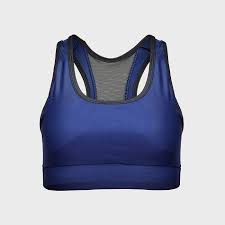Maintaining optimal health and vitality is paramount in bustling cities like New York. With hectic schedules, intense workouts, and frequent social engagements, it’s easy to become tired and dehydrated. This is where mobile IV therapy NYC comes to the rescue, offering a quick and effective solution to replenish your body’s essential nutrients and fluids. This article’ll delve into IV hydration therapy, exploring its benefits, process, risks, and how to choose a reliable clinic in NYC.
What is IV Hydration?
IV hydration, or intravenous hydration therapy, involves administering fluids, vitamins, and minerals into the bloodstream via an IV drip. This method ensures rapid absorption and allows higher dosage of nutrients to reach the cells than oral intake. Initially utilized in hospitals to treat severe dehydration and nutrient deficiencies, IV hydration therapy has gained popularity in wellness clinics and spas for its rejuvenating effects.
Benefits of IV Hydration Therapy
Hydration
One of the rewards of new york hydration therapy is rapid and efficient hydration. Infusing fluids directly into the bloodstream avoiding the digestive system, letting the body absorb fluids quickly. This is especially beneficial for dehydrated individuals due to intense physical activity, travel, or illness.
Nutrient Replenishment
In addition to fluids, IV hydration therapy delivers a potent formula of vitamins and minerals directly into the bloodstream. This replenishes essential nutrients that may be depleted due to stress, poor diet, or medical conditions. Common additives include vitamin C, B vitamins, magnesium, and electrolytes, which support overall health and well-being.
Enhanced Recovery
IV hydration therapy can accelerate recovery from various conditions, including hangovers, jet lag, and illness. Refilling fluids and nutrients helps alleviate symptoms such as fatigue, headache, and nausea, allowing individuals to bounce back quickly and resume their daily activities.
IV Hydration Therapy Process
IV hydration therapy typically begins with an initial consultation with a qualified healthcare provider. During this consultation, the provider will assess your medical history, symptoms, and hydration needs to determine your most suitable treatment plan.
Once the treatment plan is established, the IV fluids will be customized to address your specific needs, whether rehydrating after a night of indulgence or boosting energy levels before a big event. The fluids are then administered intravenously, usually through a small needle inserted into a vein in your arm.
The reputable IV Company will monitor your vital signs throughout the infusion and adjust the drip rate as needed to ensure your safety and comfort. After the session is complete, you may be advised to take it easy for a short period before resuming normal activities.
Conditions Treated with IV Hydration
IV hydration can benefit a variety of conditions, including:
- Hangovers: Alleviates symptoms such as headache, nausea, and fatigue.
- Dehydration: Replenishes fluids and electrolytes lost due to illness, exercise, or excessive alcohol consumption.
- Fatigue: Boosts energy levels and enhances overall vitality.
- Jet Lag: Helps rehydrate and re-energize travelers after long flights.
- Sports Recovery: Aids in post-workout recovery by replenishing fluids and nutrients.
Risks and Side Effects
While IV hydration therapy is generally safe, it’s essential to be mindful of risks and side effects, including:
- Infection: There is a low risk of infection at the injection site if proper hygiene protocols are not followed.
- Allergic Reactions: Some may have allergic reactions to the ingredients in the IV fluids, such as vitamins or preservatives.
- Fluid Overload: In rare cases, excessive fluid intake can lead to fluid overload, resulting in swelling and discomfort.
Choosing a Reliable IV Hydration Clinic
When selecting an IV hydration clinic in NYC, it’s crucial to consider the following factors:
- Credentials and Certifications: Ensure that the clinic is staffed by qualified healthcare professionals, such as doctors or registered nurses, who are trained in IV therapy.
- Client Testimonials: Review previous clients’ reviews and testimonials to gauge the clinic’s reputation and customer satisfaction.
- Hygiene and Safety Protocols: Verify that the company follows strict safety protocols to prevent infections and ensure a clean, sterile environment.
Cost of IV Hydration Therapy
The cost of IV hydration therapy can depend on items such as the type of fluids used, the addition of vitamins or supplements, and the clinic’s location. An average session may range from $100 to $300. Some clinics may offer package deals or membership discounts for frequent visitors.
In conclusion, IV hydration therapy is a convenient and effective way to replenish your body’s vital fluids and nutrients, quickly relieving dehydration, fatigue, and other common ailments. By choosing a reputable clinic and following proper safety regulations, you can enjoy the benefits of IV hydration with confidence.
Frequently Asked Questions (FAQs)
Most individuals experience minimal discomfort during IV hydration therapy, as the needle used for the IV drip is small and inserted into a vein in the arm.
While IV is generally safe for healthy individuals, it may not suit everyone.
Many individuals experience immediate relief and increased energy levels shortly after IV hydration therapy. However, the exact timing of the impact may vary depending on individual factors.
Eating a small meal and staying hydrated before IV hydration therapy is generally recommended. After the session, you can resume everyday dietary habits, but you must continue drinking plenty of fluids to maintain hydration.










